Adopting an Agile workflow has never been more popular, with so many firms adopting the Agile approach to project management. Agile workflow is trusted because that brings convenience, speed, and effectiveness. But what exactly is an Agile workflow, and how do you put one in place? This article contains all you need to understand Agile workflows development and put its concepts into practice in your enterprise.
Agile is a method of project management. Agile enables management teams to transcend the traditional sequential model and get more done in less time. It accomplishes this by:
Most traditional methodologies allow customer feedback only after the product has been published, such as Waterfall. And so, it is done in stages, with each one starting only after the preceding one is completed. Although the waterfall speeds up the process, it may pollute the efficacy of your product because it has not been tested with clients. As a result, Waterfall or other classic methods are not appreciated in terms of customer collaboration.
But Agile methodologies include clients in the process at all times. It is constantly providing tiny jobs and receiving feedback from customers. This enables teams to adapt fast to changes.
Read more: Most traditional methodologies & Waterfall
Let’s take a look at the breakdown of an Agile Workflow.
* Note: We will focus on the software development process because Agile development methods are the most popular form of Agile. On the contrary, no matter what kinds of your project are, most of the workflow processes are similar.
1. Ideation
Here, your project is planned. The Agile team defines and develops the product backlog. You need to plan out your Sprint.
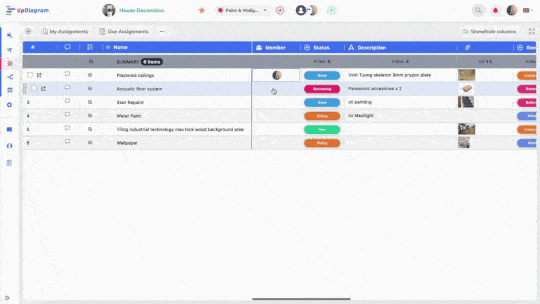 Assigned task
Assigned task
2. Inception
Once you have defined what’s going to be done. Now, you create your Sprint team. This is what you assign tasks for them.
3. Iteration
Tackling your product backlog items. It means, they’ll start working in each sprint, launch product releases, get customer feedback, and repeat the cycle. Until the product should meet all the customer requirements.
4. Release
When once Sprint is completed, you give the product to the customer and get feedback. Next step, you combine the feedback with testing before going to the next Sprint.
5. Retirement
This is the end of the workflow process. The workflow process concludes with the completion of work on software development. The Agile team can move on to the next project or develop a new product.
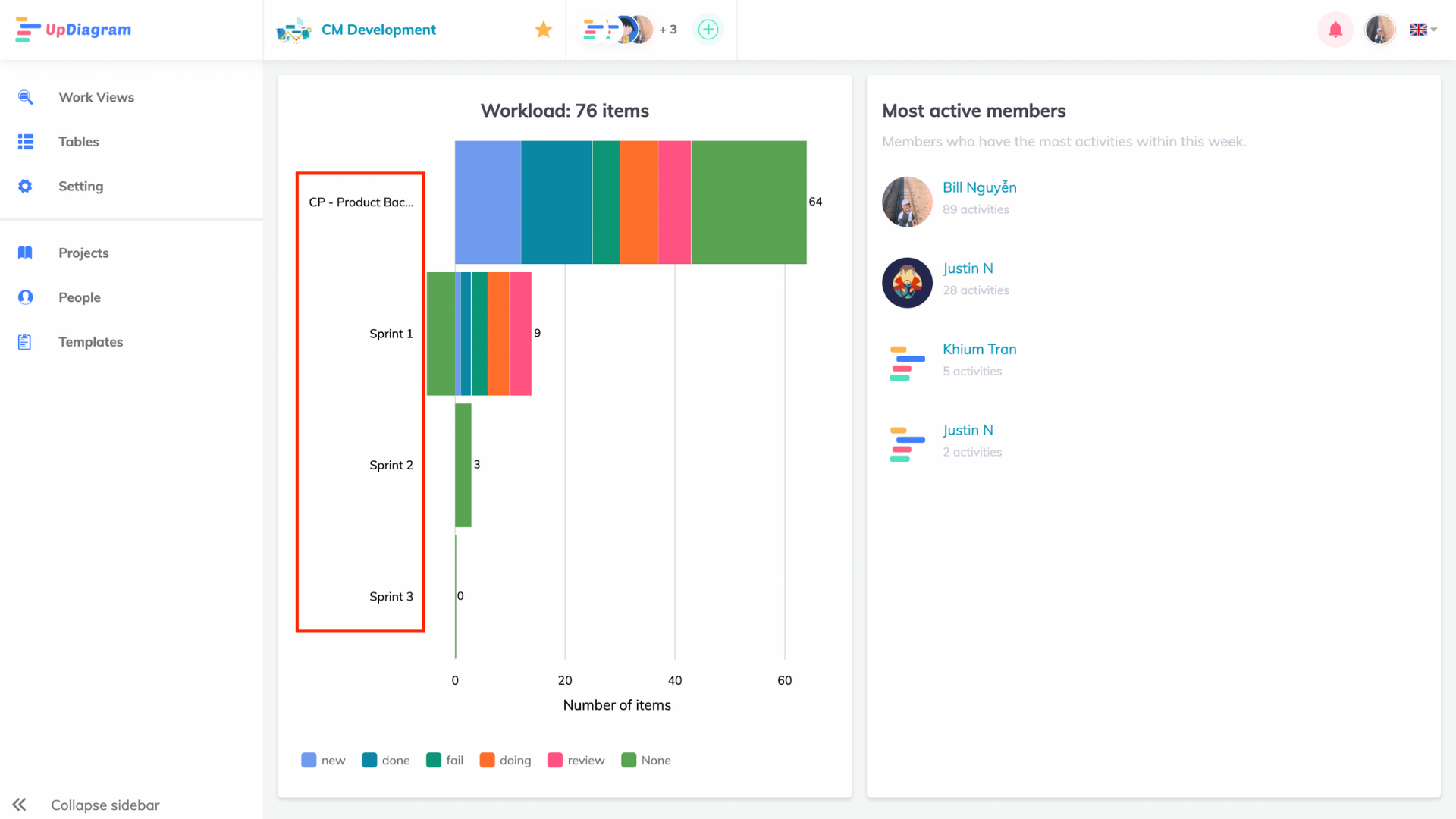 Workload show all packages (Sprints)
Workload show all packages (Sprints)
Other than “The Agile software development cycle”, “The Sprint development cycle” is detailed development workflows. It’s crucial to break down the Agile development workflow for each sprint. Below are five factors that need attention.
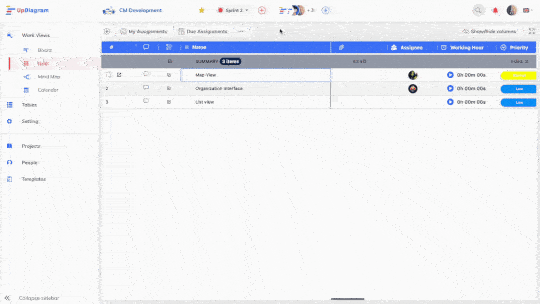 Move Items
Move Items
* When The Sprint development cycle run in UpDiagram
1. Requirements
Based on the product backlog, you need to clearly define the deliverables for each Sprint. Sprints may be created and managed with UpDiagram. The manager will move the tasks according to the appropriate Sprints.
2. Development
Your backlog items will be designed and developed by the developer. UpDiagram will assist developers in comprehending the significance of various backlogs. They will develop backlog items based on assignment, level and status of tasks.
3. Testing
When tagging jobs in UpDiagram, testers (QA/QC) will actively test the product before it is delivered to clients. Testers can also rely on the user stories listed beneath the comments to provide the most accurate findings. The status of each item can update with one click after testing.
4. Delivery
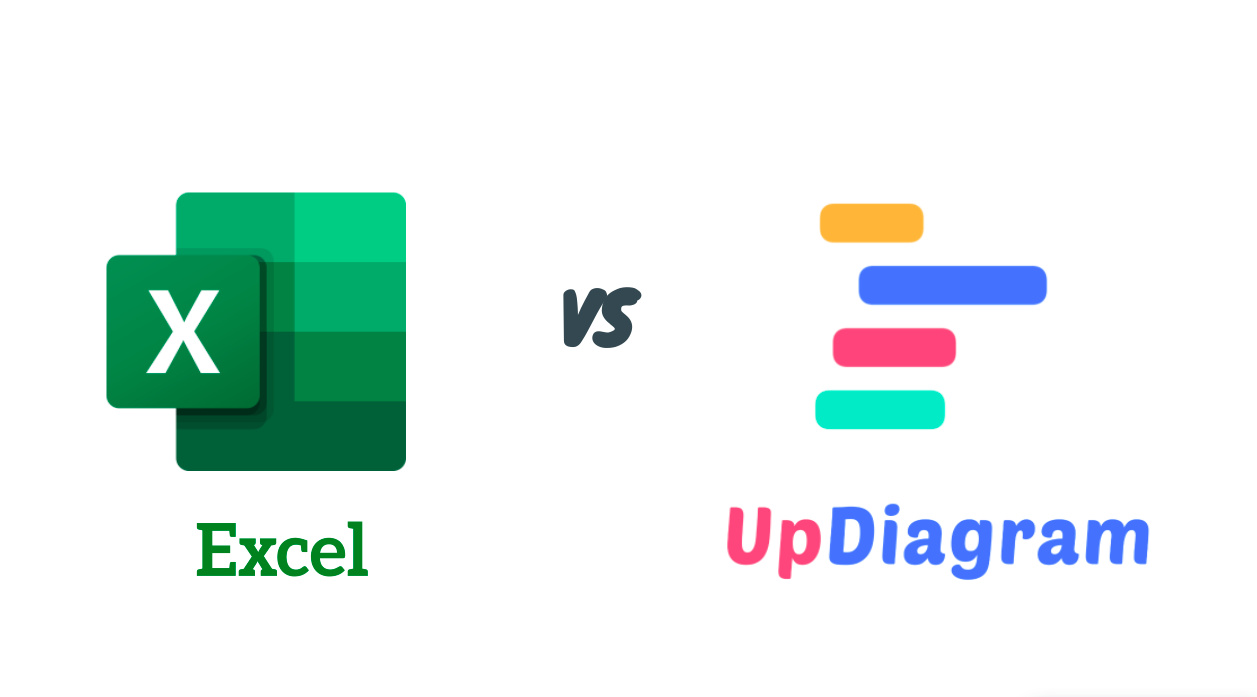
Give your backlog items to the client base for the final stage of testing. You can use Export Excel to send Sprint reports to customers or you can add your clients to view the whole progress of the project. Role and Permission will help you manage who to see what they should know.
5. Feedback
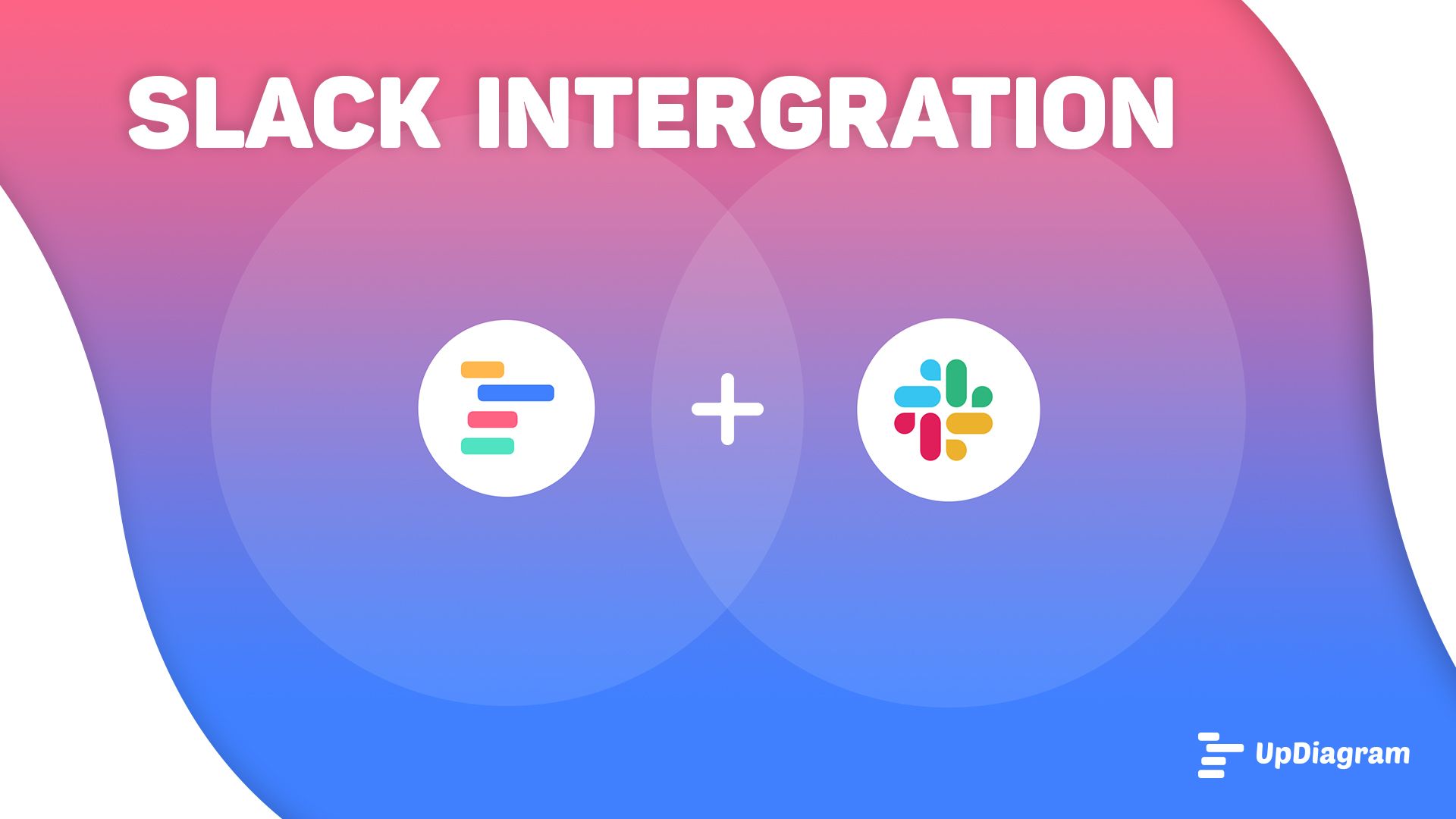
Get their comments and finish developing on it before moving on to the next sprint. You can leave your comment and communicate via any favorite tools such as Slack, Rocket chat, Microsoft team, Zalo, and so on.
Step 1: Forming
Your team need to comprehend the Agile method (principle and practices). To make it simpler for your team to adapt to the new development workflow, you should guarantee to go over step by step these Agile practices.
You will have three things in this stage:
– Implementing and comprehending Agile specialization roles
– Monitor and review Agile activities such as daily standups, sprint planning, and sprint retrospectives
– Understanding the different Agile principles and the reason why we implement them
Step 2: Storming
Begin generating your product backlog and breaking it down into sprints. Your team in the sprint planning process will be responsible for carrying it out. Check that your sprints are appropriate and realistic. Ensure that you are not attempting to handle too much in too short a period of time.
Step 3: Norming
You must assign various members of the team to different sprints and specify what they will work on in each sprint. Start defining the team role and permission. Like most project Agile, you will select a product owner, a project manager, your project team, and the project stakeholder.
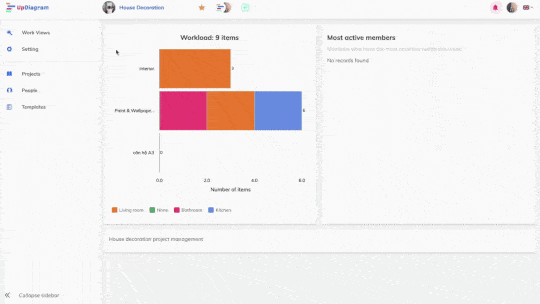
Role permission
It is important to note that the roles you establish will determine by the Agile technique you adopt. If you use a Scrum method, for example, you’ll need to choose a Scrum master. Similarly, when comparing Lean and Agile, your team configuration may differ. Adopting Kanban project management or any other Agile management methodologies is the same.
Step 4: Performing
This is the phase that Agile will work. Following the principles of the Agile Manifesto, keep in mind to have daily standups to keep track of any changes. Let the product owner present with your customer, the owner is reliant on the feedback and your team is able to work on it as soon as possible.
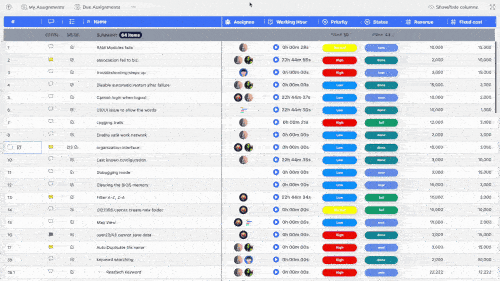
Collecting customer feedback by Comments
After working and collecting customer feedback, an agile sprint review should be conducted to move on to the next sprint. Bear in mind that, nothing is perfect for once. You should repeat the process again and again until everything is complete.
Besides the Agile workflow process, you need an Agile tool to synchronize and unify all your Agile events that help you manage them easier in one place. An ideal tool makes you enjoy the benefit of Agile.
* Fact: tip use the right workflows tool
– Keep track of your product backlog.
– Plan out your sprints.
– Encourage team collaboration.
Read more: project stakeholder | Kanban project management | agile sprint review | the benefit of Agile.
As mentioned above, with the appropriate project management platform, Agile workflow management has been easier.
Because we understand our user’s needs, UpDiagram develops to provide not only the suitable tool but also the solution that satisfies customer needs with agile workflow management.
OK, now let’s start to see how UpDiagram assists you to implement the principles of Agile to manage your tasks and sprint smoothly.
One of the principles of Agile methodologies is to be ready to adapt to any changes. So, UpDiagram provides multiple work views to easily adapt to your team’s Agile frameworks.
In addition, you can actively change different work views in one project to allow you to select which views your team can work with effectively instead of forcing you to adapt to our interface. UpDiagram support Agile Project with four popular approaches:
1. Kanban view
The display of Kanban view allows users to manipulate tasks, you can drag/drop items everywhere to stay up with the Agile process. Here is the interface of Kanban and how you actually use it to manage your Agile workflow.
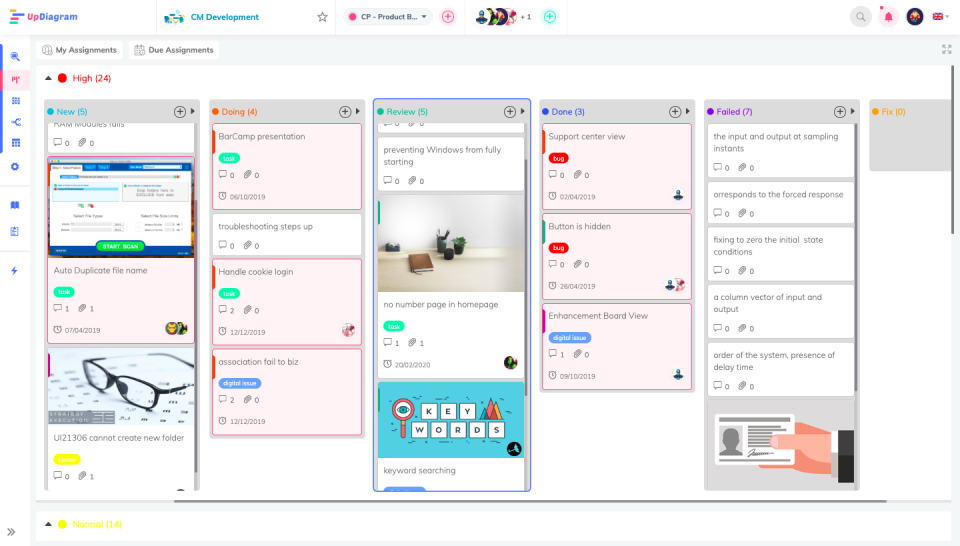 Kanban View
Kanban View
2. Grid view
This is the perfect view for fans of GTD-style to-do lists. Here, your tasks are listed down in a simple checklist that can be checked off as you progress. UpDiagram grid view is the solution for you to apply the Get-thing-done methodology. This view is useful for you to keep track of your sprint. You can select each sprint to show tasks to do. At the same time, It is able to show all sprints to help you have an over of your whole project with one view.
Read more: GTD-style to-do lists
If there are too many sprints and tasks, don’t worry because you can sort and filter tasks to define what you actually want to see in a Gird View. And so, this view adapts to your needs, not makes you adapt to them.
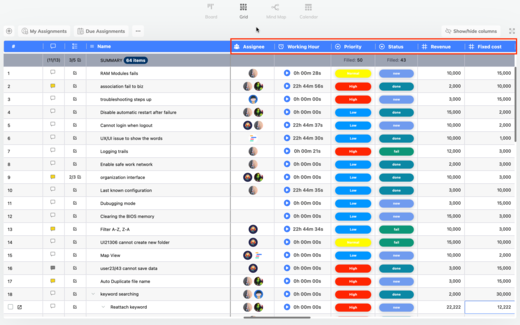
Grid View
3. Calendar
Be using this view to carefully plan your forthcoming sprints and know when things from your backlog may be added. You can track your team’s progress and what needs to be done with high priority and the due date is coming. Moreover, details of each task on Calendar view can be easily managed when you open each task popup detail.
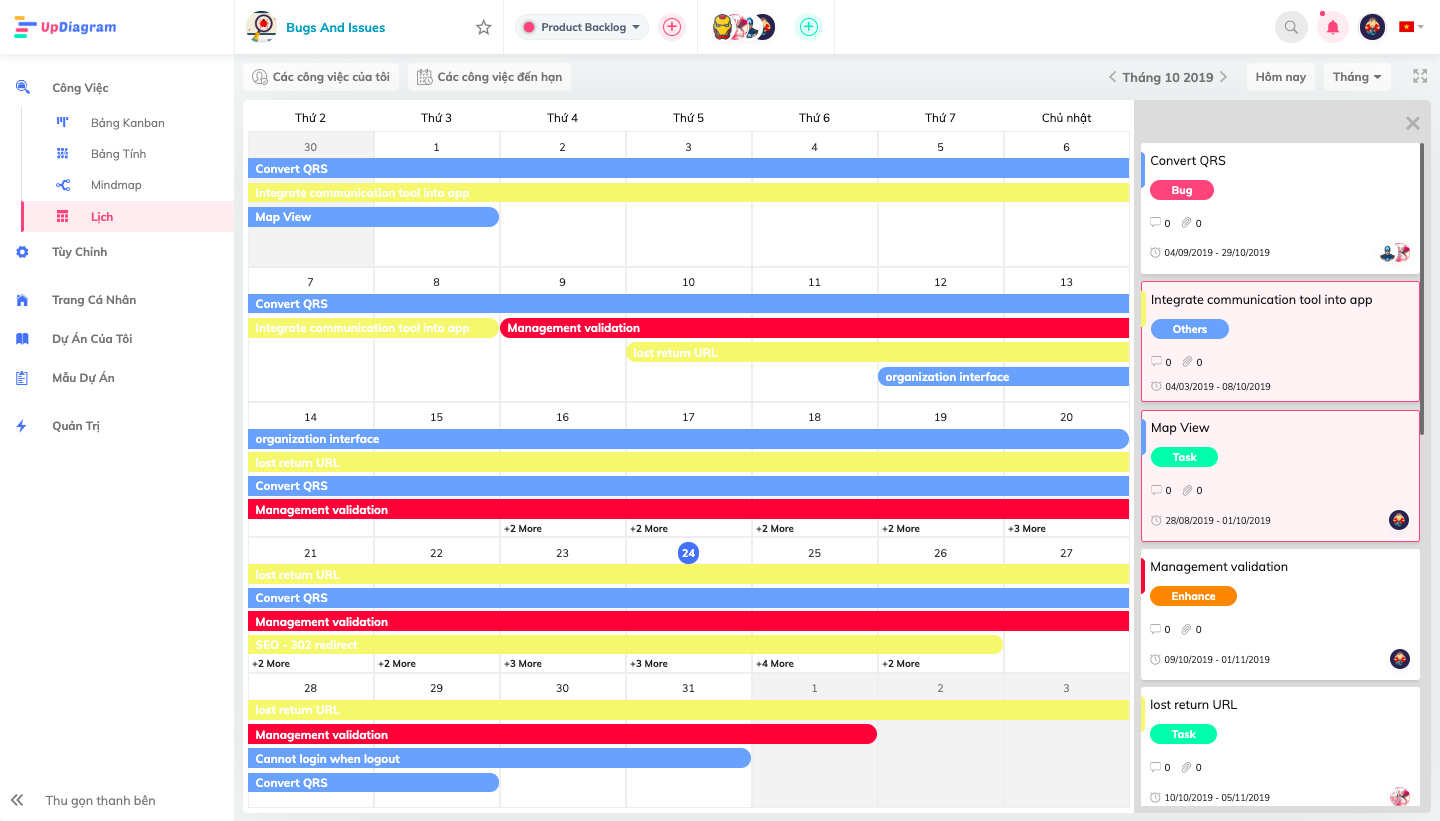 Calendar View
Calendar View
Additionally, you can define the timeframe to show your sprints by selecting:
– Week: to view your weekly sprints
– Month: to see your project roadmap in a month
4. My Assignment
My assignment is a quick filter that allows you to show all the tasks and subtasks that you are assigned. It is no longer a distraction when you are looking for your task among thousands whilst you can pay attention to your better deliverables.
To add new items/tasks in UpDiagram projects, you have to create at least one Package. Additionally, this package use as a sprint for your Agile workflow process. This helps you create your own sprint lists to divide tasks and ensure deliverables for each sprint.
Closed tasks and sprints can easily archive. Also, you can drag and drop your tasks between sprints to adapt to any changes and move on to the next iteration. As a result, you can even add Scrum points to each list to keep a check on your product backlog items. UpDiagram allows you to add a Calculated column to estimate and calculate Scrum points for each sprint as well.

All packages on Grid View
Simultaneously, a scrum manager filters and changes the status of tasks to save and record progress as references during their scrum meetings.
3. Comments promote teamwork to collaborate
To enhance and encourage the team to communicate and collaborate, UpDiagram allows users to leave their comments on every single task which facilitates your team to exchange opinions, documents and files. Also, you can set Comments as private to take notes for yourself while meeting. Besides, you can integrate your favorite communication software such as Slack, Rocketchat, Zalo, Skype to organize your communication
An Agile project management platform also provides thousands of useful features including:
– Task Status and Priorities – to define and prioritize the urgent tasks first
– Time Tracking – Allow you to track specifically for each task and members to complete
– Android and iOS mobile app – catch up on the progress no matter where you are
Putting in place an Agile process does not have to be complex! Following the steps listed here with the right agile tool to simplify and maximize Agile workflows value to your team. Signup for free to use the right agile platform and Contact us for better consulting for your Agile management workflow.
Reference: pmi.org | proofhub.com | sciencedirect.com | tech.gsa.gov | geekbot.com | zapier.com | scruminc.com |